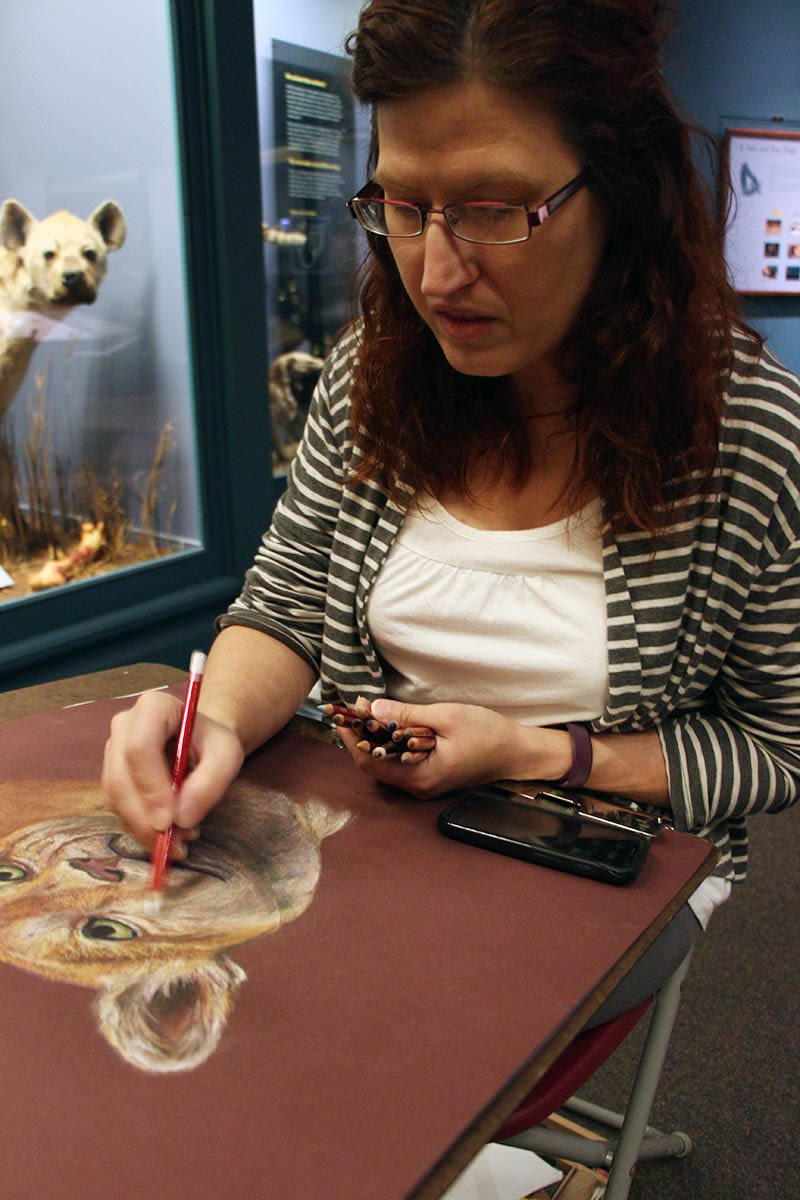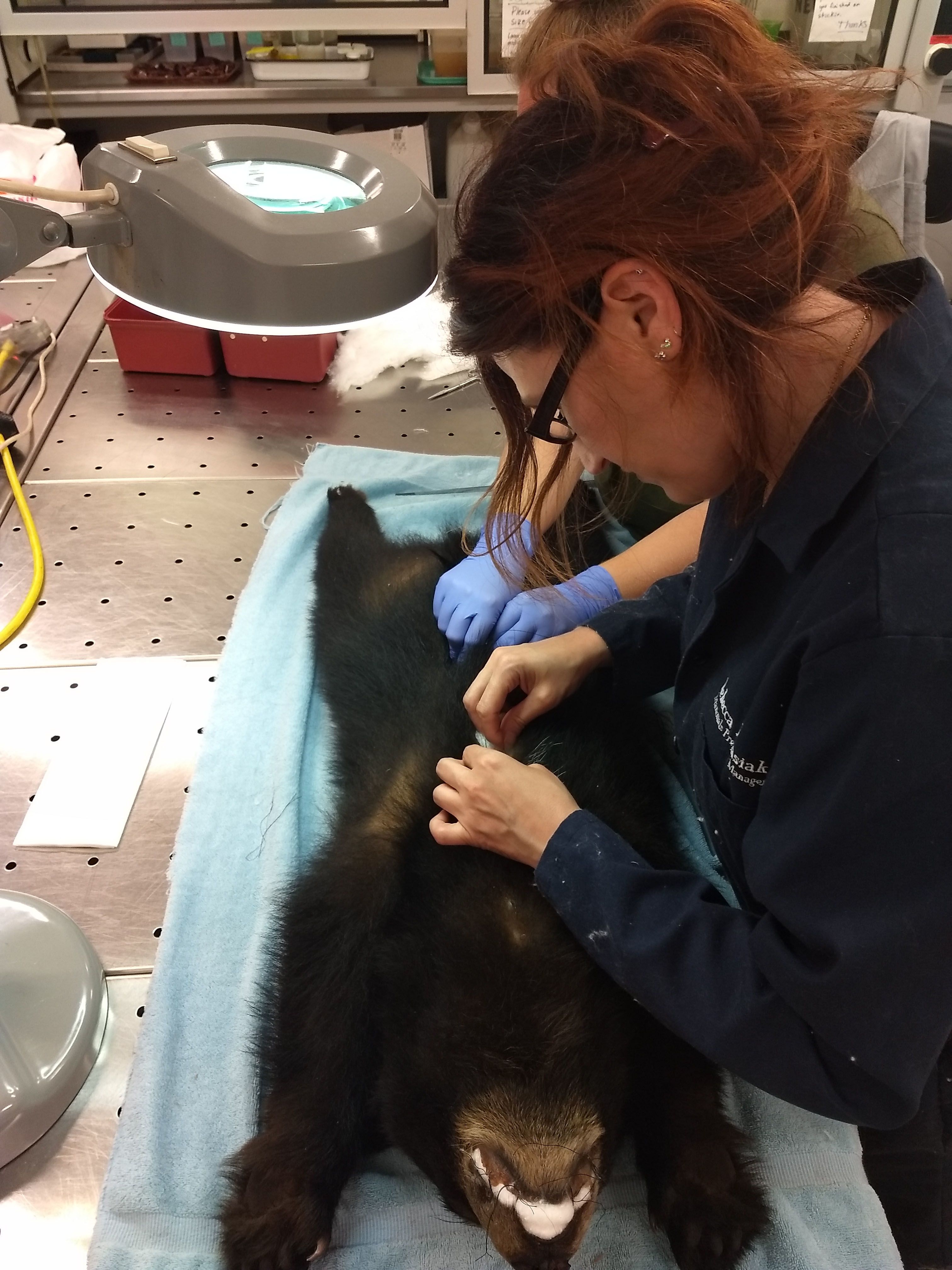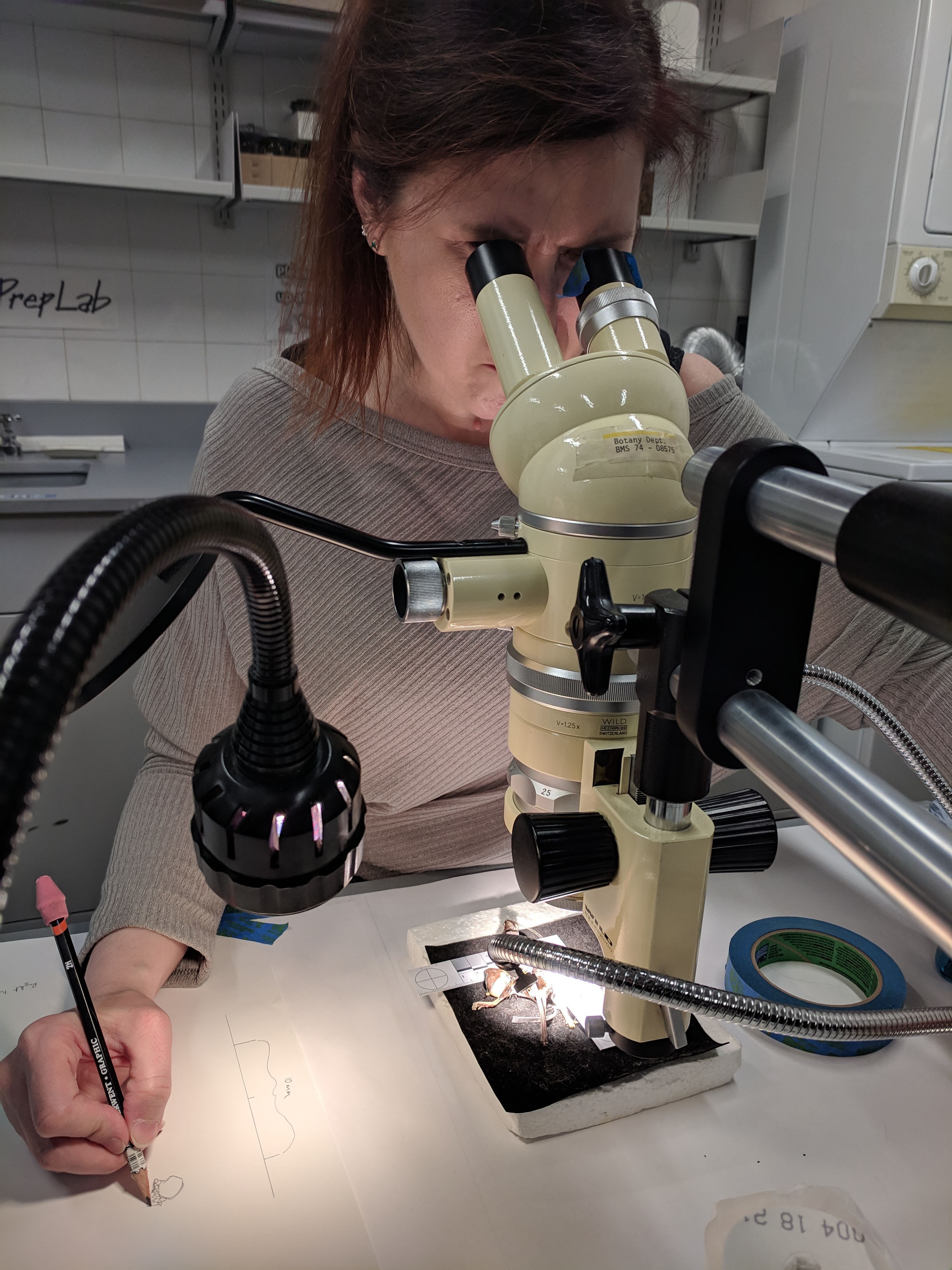Expert Advice from Rebecca Banasiak
Chief Mammals Preparator of the Field Museum of Natural History

by Nadya Kelly (MA 2023)
As a strong proponent of STEAM education, Rebecca Banasiak (BFA 2001) never felt she had to choose just science or art as a career. Her work at Chicago’s Field Museum of Natural History combines both of her passions to create scientific illustrations of animal species and prepare specimens for research.
After receiving a bachelor’s degree in fine arts and chemistry, Banasiak went on to gain another dual bachelor’s degree at the School of the Art Institute of Chicago (SAIC), studying primarily in the departments of Visual Communication Design and Painting and Drawing. At SAIC, faculty members encouraged her to pursue her passion for natural science. Banasiak now works as the chief mammals preparator, where she spends her days preparing mammals for research and collections. She talks to us about how art and science merge in her daily work.

Banasiak working in one of the Field Museum's facilities. Image courtesy of Rebecca Banasiak
Banasiak working in one of the Field Museum's facilities. Image courtesy of Rebecca Banasiak
What does a day in the life of the chief mammals preparator look like?
I work in our mammals prep lab, and I am the chief preparator. We care for the 250,000 specimens that we have in our collection as well as the many specimens that haven’t been cataloged yet. I take scientific measurements; this is where my science degree really does come in handy because I am doing what’s considered the beginnings of research for every single mammal that comes through the doors of the lab. My life is never the same every day. I can be numbering bones. I could be stuffing animals. I could be skinning them. I could be cleaning bones. I also do a lot of the photo and media requests for researchers, and I take care of our lovely beetle colony.
What was your student experience like?
I think it made me look at everything in a different light. I started taking media and medium classes, like learning new types of paints, new techniques for painting, things like that, and also, I realized I could utilize all the basic drawing skills, all the basic painting skills, and be able to apply them to the computer. Then, I took natural illustration and scientific illustration courses through Visual Communications, which were right up my alley because I tended to focus a lot of my drawings on animals, and I got to know Peggy Macnamara and Olivia Petrides (MFA 1977). I ended up taking a lot of Olivia’s classes through Painting and Drawing and then did the same thing with Peggy through Visual Communications. I built relationships with them, and the two of them became my mentors in doing natural and scientific illustrations.

Banasiak sketching a specimen. Image courtesy of Rebecca Banasiak
Banasiak sketching a specimen. Image courtesy of Rebecca Banasiak
Have you faced any challenges as a woman in science?
I think as women, and just any marginalized group, we are the ones that are least represented in STEAM. We have to prove ourselves in order to be respected or in order for our opinions to be respected, and I’ve seen this throughout my 20 years at the museum, both in the museum, outside the museum, in the art community, outside the art community, in other different types of communities. I’ve been lucky, though. I have managers who are in complete support of the women staff.
What advice would you have given yourself when you first started your career?
I’d probably tell myself, Don’t let what the boys say bother you because there’s nothing to be ashamed of for loving science, and loving art, and loving math. Also, I would tell myself, Don’t let anybody tell you you can’t do it. You can go into science. You can go into art. I did a chemistry degree, and I did an art degree. All of my science teachers in high school were all women. They told me, “If I did it and I’m sitting here teaching you, you can do it, too.” ■

